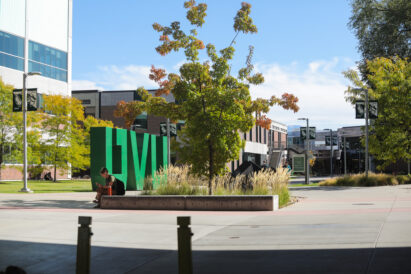Survey: 1 out of 5 LDS Gen Z self-identify as other than heterosexual
According to a recent survey conducted by Nationscape, data shows that approximately 23% of Generation Z adults who are members of The Church of Jesus Christ of Latter-day Saints self-identify as something other than heterosexual.
Another way of saying it is 23 adults ages 18-22 out of 100 in the LDS Church are not heterosexual but identify as gay, lesbian, bisexual or other.
A partnership between Democracy Fund and the University of California at Los Angeles, Nationscape is one of the largest public opinion survey projects ever conducted, according to an online description of the group.
The group runs surveys weekly and interviews across counties, states and multiple urban areas on a variety of focused subjects; most of the surveys during the run-up to the 2020 election focused on political information.
However, part of that focus looked at the church membership, breaking down differences between baby boomers, Gen X, Millennials and Gen Z.
Gen Z are people born in 1997 forward. In that category, the survey found that 10% of respondents consider themselves bisexual, and 7% gay or lesbian. Only 4% said other and 1% did not want to say.
It was also noted that Gen Z LDS are comparable to non-LDS peers with 5% identifying as gay or lesbian and 12% bisexual, with 3% choosing other and 4% not wanting to say.
That, according to Religion News Service reporter Jana Riess, is a change. In the introduction to her book “The Next Mormons,” completed in 2016, Riess notes: “American Millennials — the generation born in the 1980s and 1990s — have been leaving organized religion in unprecedented numbers. For a long time, the Church of Jesus Christ of Latter-day Saints was an exception: nearly three-quarters of people who grew up Mormon stayed that way into adulthood.”
While the passage speaks to Millennials, Gen Zers are leaving at even a more rapid pace, usually around age 19.
The book’s introduction continues, “Drawing on a large-scale national study of four generations of current and former Mormons as well as dozens of in-depth personal interviews, Riess explores the religious beliefs and behaviors of young adult Mormons, finding that while their levels of belief remain strong, their institutional loyalties are less certain than their parents’ and grandparents’. … Those who remain within the fold are attempting to carefully balance the Church’s strong emphasis on the traditional family with their generation’s more inclusive definition that celebrates same-sex couples and women’s equality. Mormon families are changing too. More Mormons are remaining single, parents are having fewer children, and more women are working outside the home than a generation ago.”
Riess notes that 19% of LDS Millennials self-identify as other than heterosexual.
The Nationscape survey shows that even between Millennials and Gen Zers, the gap is growing wider on self-identity and sexual orientation and those choosing to remain in the church.
The First Presidency, including President Russell M. Nelson and his counselors Presidents Dallin H. Oaks and Henry B. Eyring, and the Quorum of the Twelve Apostles are keenly aware of these concerns and in some cases are experiencing these issues within their own families.
“We need to listen to and understand what our LGBT brothers and sisters are feeling and experiencing,” said President M. Russell Ballard of the Quorum of the Twelve Apostles. “Certainly, we must do better than we have done in the past so that all members feel they have a spiritual home where their brothers and sisters love them and where they have a place to worship and serve the Lord.”
Such direct, public references to the “rising generation” in conference talks, Face to Face firesides and devotionals, show church leadership is taking notice of the issue.
Yet, while efforts to keep these adults in the fold are being manifest, they are in contrast to church restrictions on LGBTQ individuals, including baptism and using the priesthood, same-sex marriage and statements including The Family: A Proclamation to the World.
In his book “Listen, Learn and Love,” Richard Ostler, a former LDS Bishop of young adults, shares hundreds of examples of stories from LDS and former LDS men and women who self-identify as other than heterosexual.
His book, he said, was intended to help members understand and better support LGBTQ members in their “unique and often difficult road.”
However, if the data holds true, understanding may not be enough to keep some of those Gen Zers from leaving the flock.





